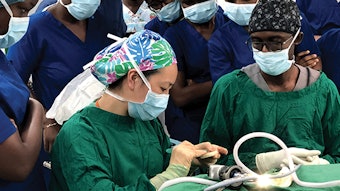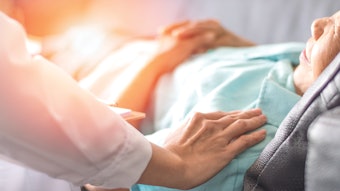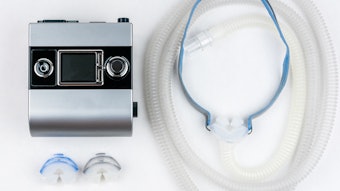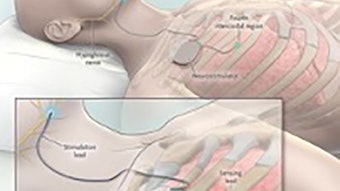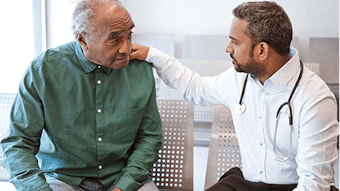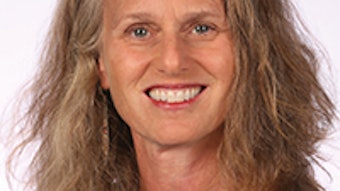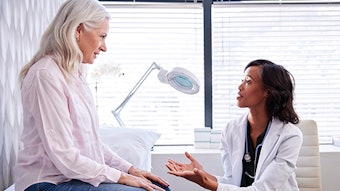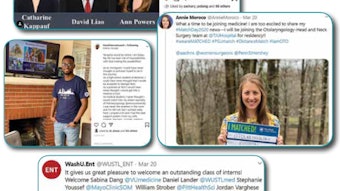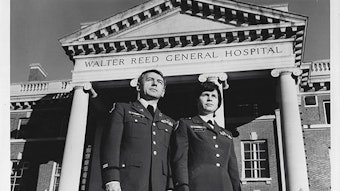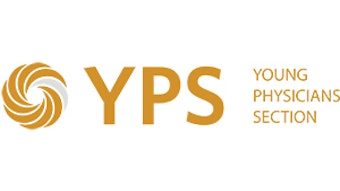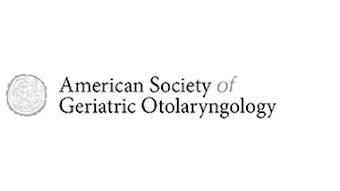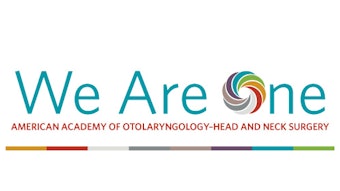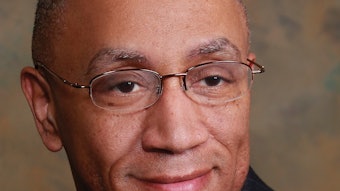Our Otolaryngology Community: Collaborating and Sharing Experiences for Everyone’s Mutual Benefit
Our May issue typically has been used to promote our Annual Meeting & OTO Experience as well as other upcoming events. Clearly, this is the most atypical May I have experienced during my four decades of treating otolaryngology patients. Most of the world is beginning to see some needed light at the end of the tunnel, and physicians are either incrementally returning to practice or planning for that eventuality in the near future.
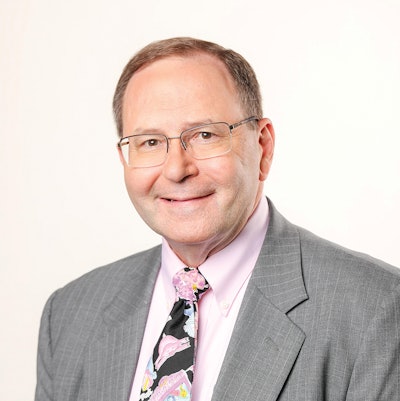 James C. Denneny III, MD, AAO-HNS/F EVP/CEO
James C. Denneny III, MD, AAO-HNS/F EVP/CEO
The COVID-19 pandemic has created unprecedented disruptive societal consequences that have resulted in extreme danger to populations worldwide and have necessitated public health measures dramatically changing the way healthcare is delivered. This has been particularly evident in the medical community that has been forced to deal with generalized fear within the population, supply and testing shortages, and evolving scientific knowledge. All of these have combined to greatly accentuate the normal stresses associated with the delivery of healthcare. Additionally, the financial consequences of the pandemic are weighing heavily on physicians and practices in all settings.
The Academy spent most of the last two months identifying, collating, organizing, and disseminating the most current information related to patient and healthcare community safety, disease diagnosis, COVID-19 statistics and progression, legislative and regulatory changes, and resources designed to survive the crisis. More recently, we are focusing on the process of “returning to practice” as we see many areas of the country on the downside of the curve and beginning to loosen restrictions. Our goal is to provide useful strategies to safely reinstitute normal office exams and procedures and elective outpatient and inpatient surgical care, all while maintaining the highest quality of care. The American College of Surgeons (ACS) released a guidance document detailing general principles to be considered as surgeons return to the operating room for non-emergent cases. This covers specific considerations for all five phases of surgical care over the broad spectrum of surgery. It will serve as the basis for otolaryngology to develop a specialty-specific transition plan back to the operating room including prioritization strategies as we evolve back to full capacity. Our otolaryngology specialty societies have generously agreed to collaborate with the Academy committee structure so that we can produce a comprehensive and consistent list for otolaryngologist-head and neck surgeons to use in their offices, at ASCs, and in the hospital setting. This guidance will be helpful not only in re-operationalizing office practice, but also in negotiating operating schedules at your surgery center and hospital.
The societal disruption caused by the COVID-19 pandemic has stressed the general population and the entire healthcare community to exceptional levels. Fear of catching or spreading the virus, media reporting, shortage of resources, general and practice-specific economic concerns, and the loss of community have weighed heavily on everyone. During the isolation phase used to mitigate the rapid spread of COVID-19 for a prolonged period, it has become apparent how important community support and societal interaction are to a meaningful and satisfying life. The longer the isolation has persisted, the more I appreciate videoconferencing that at least enables you to have a greater semblance of spirit than a phone call. Simply allowing someone to describe what is going on with them adds immeasurably to the value of the meeting. I have been particularly moved by our podcast series on wellness, where our expert presenters have done a fabulous job on identifying cogent issues and measures available to deal with these situations. Jo A. Shapiro, MD, a participant on our first wellness podcast, has also written an article for this issue of the Bulletin. You can find “Peer Support: Taking Care of Ourselves and Each Other” on page 9.
Aside from losing the ability to practice medicine and the joy it brings, the cancellation of the majority of scientific meetings from mid-February through the summer has taken away some of the favorite education programs for physicians as well as the opportunity to renew existing friendships, make new ones, and exchange new ideas. There are many opportunities to obtain the CME necessary to maintain licensure and hospital privileging through a variety of virtual mediums. However, this year after physicians and the entire healthcare team have endured levels of stress and practice conditions that are unprecedented in the provision of routine care during their lifetimes, attending a meeting after we emerge from the COVID-19 pandemic crisis will offer much more than just the education opportunities. The personal exchange of experiences among friends will be uplifting and therapeutic as we strive to return to normal. Everyone’s experiences will be based on a similar platform, but whether you are a student, a resident, an attending physician, a private practitioner, an employed physician, in the military, young or old, the personal occurrences etched in everyone’s mind will be congenially shared to everyone’s mutual benefit.
We are continuing the preparations for holding our 124th Annual Meeting & OTO Experience in Boston this September. Drs. Wax and Chelius led the Annual Meeting Program Committee through their first virtual program selection meeting and have identified a fabulous program with the flexibility to add late-breaking presentations as we emerge from the COVID-19 pandemic and establish new day-to-day practice norms. As a result of the multiple meeting cancellations around the world, the Academy’s meeting in September will be a great opportunity to “Bring Together the World of Otolaryngology” to share scientific knowledge, personal experiences, and future plans. The camaraderie generated by new and long-standing friendships will be renewed and provide a solid support community that will last for years. Despite the advances in technology and the widespread availability of virtual meetings, the formation of new and the renewal of existing relationships on a personal level has immeasurable value.
In response to attendees’ suggestions, we are moving our “Opening Ceremony” back to Sunday morning where it will mark the official beginning of the meeting. This year’s opening ceremony will feature an outstanding presentation from our featured guest speaker, Joel Selanikio, MD, discussing his thoughts on the future of otolaryngology practice and how the pandemic influenced this evolution. He will also participate in an interactive Panel Presentation with Academy leaders and an interactive discussion with attendees as we explore the topic in more detail. For those interested in medical history, there will be a premier event at the Ether Dome and adjoining museum on Monday evening that will feature insightful presentations including the resident competition for best paper. I encourage you to thoroughly peruse this month’s Bulletin for a complete review of the details of the meeting.
In the wake of the tremendous fallout from the COVID-19 pandemic that was mostly negative, I find great optimism and encouragement from the ability of society at all levels to focus on a common problem with a collaborative and productive resolve to address this millennial event. This was particularly true in the medical community, which was faced with total disruption of normal practice patterns, initial severe shortages of supplies for protection, diagnosis, and treatment, all while being at substantial risk of infection yourselves and facing considerable economic consequences. Physicians and other healthcare workers were often placed into situations outside of your normal areas of expertise.
The rapid response in identifying and prioritizing not only the immediate concerns and needs raised by the pandemic, but also the short-term, intermediate, and long-term ramifications was made possible by marshaling the resources available from many sources, not the least of which was the medical association community. The willingness to share information and best practices transcended national and state borders, specialty designations, and levels of training. These efforts predominantly involved patient and provider safety, accumulating real-time scientific information, education and training concerns, and short-term economic issues. There is ongoing investigation into the breadth of consequences that will result from this event. Equally important has been the aggressive, unified advocacy efforts on behalf of all healthcare providers and their patients. These efforts resulted in unprecedented legislative and regulatory policies that changed the course of the disease and benefited providers and patients alike. Make no mistake, there is still much to be done, but these actions set the stage for further recovery.
It has been particularly gratifying to work hand-in-hand with our specialty societies within and outside of the otolaryngology family to produce education and scientific information that is consistent and that has and will continue to affect policy favorably. For example, the Society of Critical Care Medicine opened their tool “Critical Care for Non-ICU Clinicians” to all physicians for no cost and proved invaluable for those reassigned to these areas. And the Academy’s initiative on anosmia was instrumental in the CDC’s decision to add anosmia as a sentinel symptom of the coronavirus. The COVID-19 Anosmia Reporting Tool drew responses from multiple specialties across the world. Learn more about those efforts on page 8.
As long as “We are One,” both as otolaryngologists and as a medical community, recent evidence shows that we can accomplish a great deal for our specialty, profession, and the patients we serve. Your Academy will continue to actively work with you to recognize and accomplish your goals. Thank you for all that you do!
